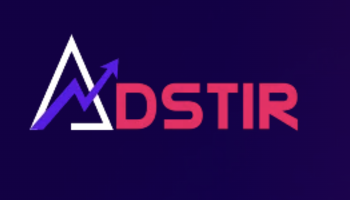In the ever-evolving landscape of the banking industry, data has emerged as a critical asset. With an exponential increase in data volumes and stringent regulatory requirements, it has become essential for banks to effectively manage and protect their data assets. This is where data classification tools come into play.
By providing sophisticated solutions for data classification, these tools are revolutionizing the banking industry, enabling institutions to extract valuable insights, enhance security, and optimize operational efficiency.
The Need for Data Classification in Banking
In the banking industry, data classification is essential for a variety of reasons.
Firstly, it enables banks to understand the nature of their data and identify sensitive information, such as personally identifiable information (PII) and financial data. This knowledge is crucial for complying with data protection regulations, including the General Data Protection Regulation (GDPR) and the Payment Card Industry Data Security Standard (PCI DSS).
Secondly, data classification helps banks effectively manage their data throughout its lifecycle. By categorizing data based on its sensitivity and importance, banks can implement appropriate storage, retention, and deletion policies. This ensures that data is properly managed, reducing the risk of data breaches and minimizing storage costs.
How Data Classification Tools Work
Data classification tools utilize advanced algorithms and machine learning techniques to automatically analyze and categorize data based on predefined rules and patterns. These tools can scan structured and unstructured data across various sources, including databases, file shares, emails, and cloud repositories.
Data classification tools employ a combination of techniques, such as keyword matching, regular expressions, data fingerprinting, and machine learning models, to identify sensitive information.
They can detect sensitive data elements, such as Social Security numbers, credit card numbers, and account information, within documents and data fields.
Key Benefits of Data Classification Solutions in Banking
Data classification solutions offer a wide range of benefits to the banking industry. Let’s explore some of the significant advantages:
1. Enhanced Data Security and Compliance
Data breaches can have severe consequences for banks, including reputational damage, financial losses, and regulatory penalties. Data classification solutions play a crucial role in enhancing data security by identifying and protecting sensitive information. By accurately classifying data, banks can apply appropriate security controls and encryption to safeguard sensitive data from unauthorized access.
Furthermore, data classification solutions facilitate compliance with regulatory requirements. They enable banks to identify and manage personal data, ensuring compliance with data protection laws. By automatically applying data classification labels, banks can implement data access controls and track data usage, thereby enhancing data privacy and meeting regulatory obligations.
2. Efficient Data Management and Governance
Efficient data management is vital for banks to optimize their operations and improve customer experiences. Data classification tools provide a structured framework for organizing and managing data assets.
By categorizing data based on its significance, banks can prioritize data management efforts, allocate resources effectively, and ensure the availability of critical data for decision-making processes.
Data classification solutions also support data governance initiatives by establishing data ownership, data stewardship, and accountability. By clearly defining data classification policies and roles, banks can establish a strong data governance framework, improving data quality, and enabling informed decision-making.
3. Streamlined Decision-Making Processes
Data classification tools enable banks to extract valuable insights from their data. By categorizing data based on its relevance to specific business functions, data classification solutions empower banks to streamline their decision-making processes.
With the help of data classification tools, banks can easily identify and access the data they need for critical decision-making. By tagging data with appropriate classifications, such as customer demographics, financial trends, or risk indicators, banks can quickly retrieve relevant information.
This accelerates the decision-making process, improves the accuracy of decisions, and enables banks to respond swiftly to market changes.
Moreover, data classification tools facilitate data analytics and reporting. By classifying data into different categories, banks can easily generate reports, perform trend analysis, and gain insights into customer behavior, market trends, and risk profiles.
This empowers banks to make data-driven decisions, identify growth opportunities, and mitigate potential risks.
4. Real-Time Fraud Detection and Prevention
In the banking industry, fraud detection and prevention are of paramount importance. Data classification tools play a crucial role in identifying fraudulent activities and preventing financial losses.
By leveraging advanced machine learning algorithms, data classification solutions can detect patterns indicative of fraudulent behavior. These tools can analyze large volumes of data in real-time, identifying anomalies, suspicious transactions, and potential fraud indicators.
Banks can proactively monitor their systems, detect fraudulent activities promptly, and take immediate action to mitigate risks.
Data classification tools can also help banks identify potential fraud trends by analyzing historical data. By categorizing and analyzing past fraudulent cases, these tools can identify common patterns, enabling banks to strengthen their fraud detection mechanisms and develop robust preventive measures.
Challenges and Considerations
While data classification tools offer numerous benefits, banks must be aware of certain challenges and considerations when implementing them:
Data Accuracy: Data classification tools heavily rely on the accuracy of predefined rules and machine learning models. Banks must ensure that these rules and models are regularly updated to adapt to evolving data landscapes and changing regulatory requirements. Additionally, human oversight is necessary to review and validate the accuracy of data classification results.
Data Privacy: Banks must handle data classification in a privacy-conscious manner, particularly when dealing with sensitive customer information. It is crucial to implement appropriate data anonymization and encryption techniques to protect customer privacy while still deriving insights from classified data.
Integration and Scalability: Banks often have complex data environments with various systems and data sources. Implementing data classification tools may require integration with existing systems and databases. It is essential to choose tools that offer seamless integration capabilities and scalability to handle the increasing volumes of data generated by the banking industry.
Employee Training and Adoption: Successful implementation of data classification tools requires proper training and awareness among employees. Banks must invest in training programs to ensure that employees understand the importance of data classification, how to use the tools effectively, and adhere to data classification policies and procedures.
Future Outlook
The future of data classification tools in the banking industry is promising. As technology continues to advance, these tools will become more sophisticated, leveraging artificial intelligence and machine learning to enhance their capabilities.
They will become more adept at identifying complex patterns, detecting emerging risks, and automating data classification processes.
Additionally, data classification tools will play a critical role in supporting emerging technologies such as artificial intelligence, robotic process automation, and blockchain in the banking industry.
They will provide the necessary framework for data management and governance in these technologies, ensuring the integrity, security, and compliance of data.
Conclusion
Data classification tools are revolutionizing the banking industry by enabling banks to effectively manage, protect, and leverage their data assets. These tools enhance data security, improve operational efficiency, and streamline decision-making processes.
By embracing data classification solutions, banks can stay ahead of the competition, enhance customer experiences, and navigate the complex regulatory landscape with confidence







